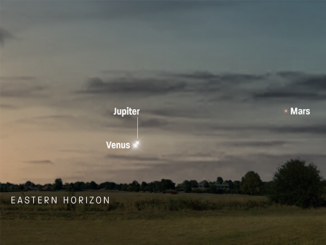
conjunction

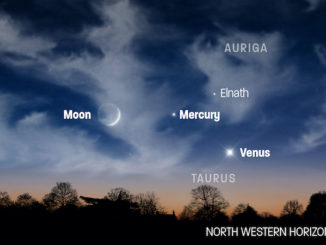
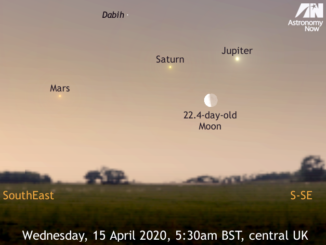
See the waning crescent Moon meet the dawn planets, 15–16 April 2020
There’s a lot of planetary activity in the dawn sky in mid-April. If you’re an early riser in the British Isles, let the waning crescent Moon be your guide to the naked-eye planets Jupiter, Saturn and Mars on 15 and 16 April 2020. Typical 7×50 or 10×50 binoculars will show these attractive conjunctions well, while the smallest of telescopes also reveal some of Jupiter’s bright Galilean moons.
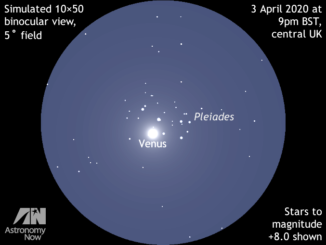
Planet Venus photobombs the Pleiades (Seven Sisters) 1–5 April
As April 2020 opens, dazzling Venus at dusk is drawing ever closer to the magnificent Pleiades (Seven Sisters) in the constellation of Taurus. The brightest planet makes its closest approach to this famous open star cluster on the UK night of 3 April, when typical 10×50 binoculars and small telescopes will deliver memorable views around 9pm BST.
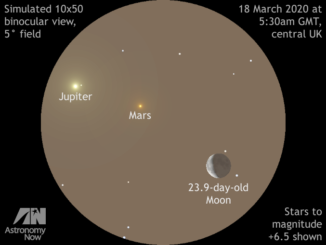
See the old Moon join a dawn planetary parade, 18–19 March
If you’re an early riser in the British Isles, let the waning crescent Moon be your guide to three naked-eye planets – Mars, Jupiter and Saturn – at dawn on 18 and 19 March 2020. This celestial conjunction occurs in the constellation of Sagittarius where you can see all four Solar System bodies within the span of a fist at arm’s length. Look for attractive binocular conjunctions too.

See planets Venus and Uranus get close at dusk on 8 March
Dazzling planet Venus continues to be a useful celestial signpost to other planets at dusk. Having already showcased Neptune and Mercury this year, the brightest planet has a close conjunction with Uranus on the UK evening of Sunday, 8 March. The pair lie just 2.2 degrees apart against the constellation backdrop of Aries, simultaneously visible in typical 10×50 binoculars.
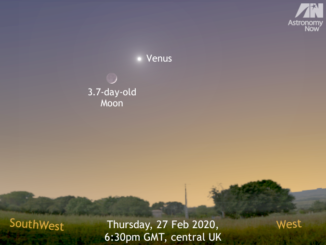
See the crescent Moon meet Venus at dusk, 26–28 February
For three evenings from 26–28 February 2020, observers in Western Europe including the British Isles can watch the waxing crescent Moon’s changing configuration with brightest planet Venus in the west-southwest at dusk. The pair are closest for UK-based observers on the evening of Thursday, 27 February, simultaneously visible in low-power binoculars.
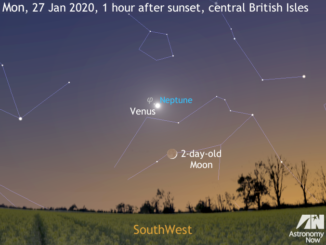
Venus dazzles at dusk and closes in on Neptune
Even casual skywatchers cannot fail to notice brightest planet Venus currently hanging like a lantern above the southwest horizon at dusk. But as Venus moves eastwards through Aquarius on successive nights, it draws closer to outermost (and faintest) planet Neptune until the pair reach a particularly close conjunction on the UK evening of Monday, 27 January.

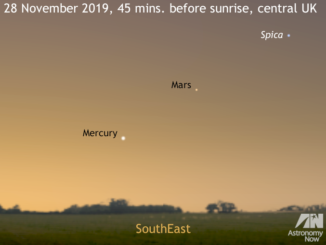
See Mercury at its best meet Mars in the dawn sky
Innermost planet Mercury puts on its best morning display of the year for Northern Hemisphere observers from late November to early December. Skywatchers in the British Isles should find a location offering an unobstructed view of the southeast horizon about 45 minutes before sunrise to get the best views, with the Red Planet and star Spica – the brightest in Virgo – also nearby.
